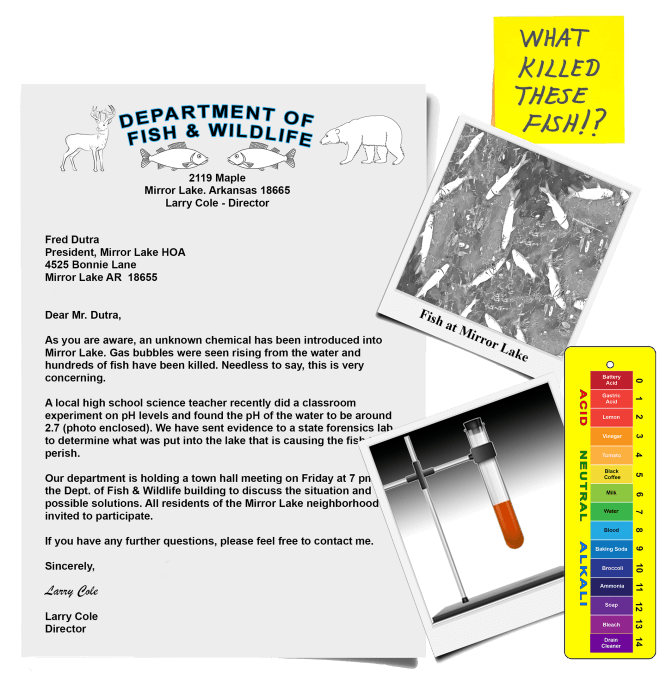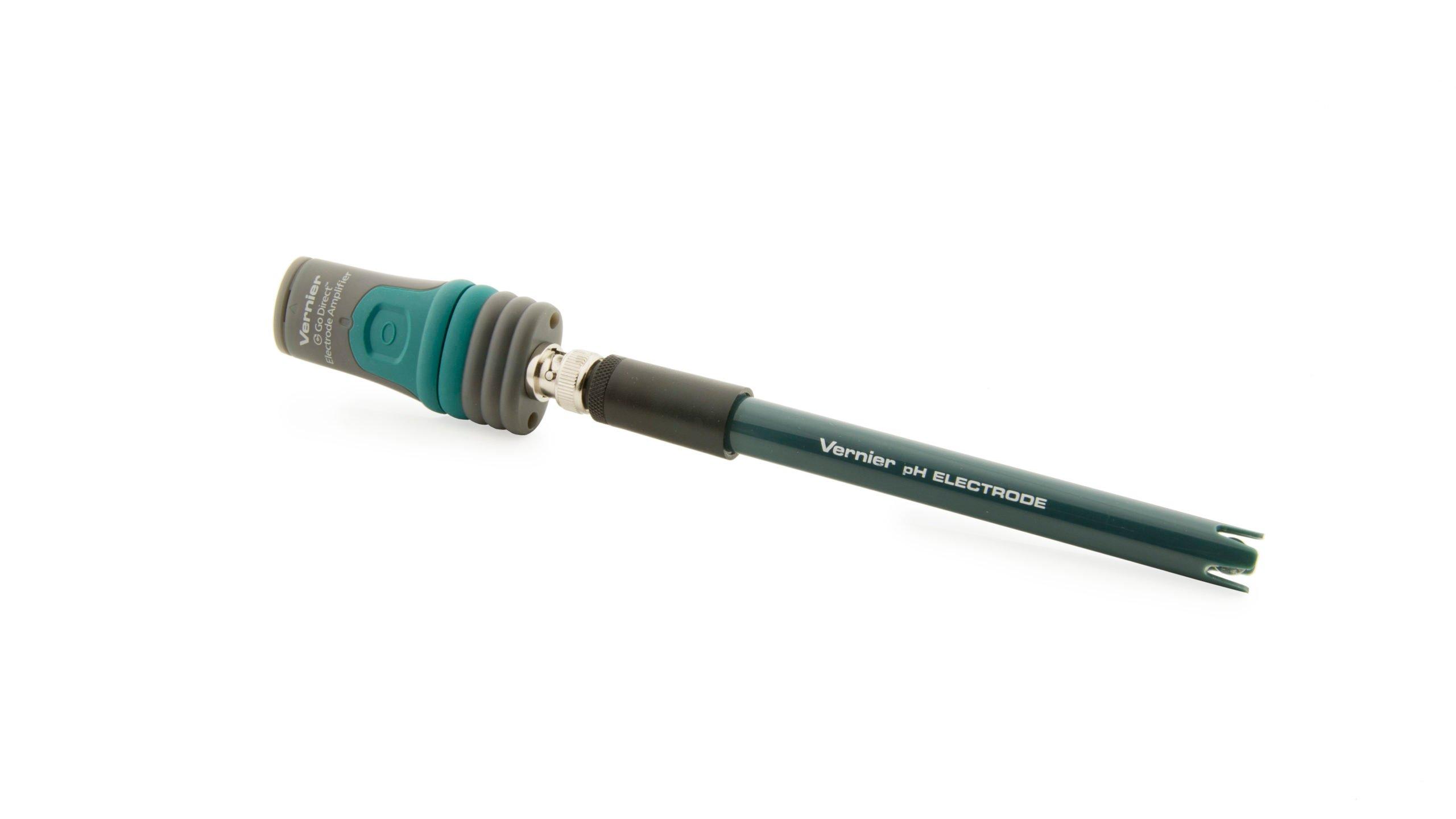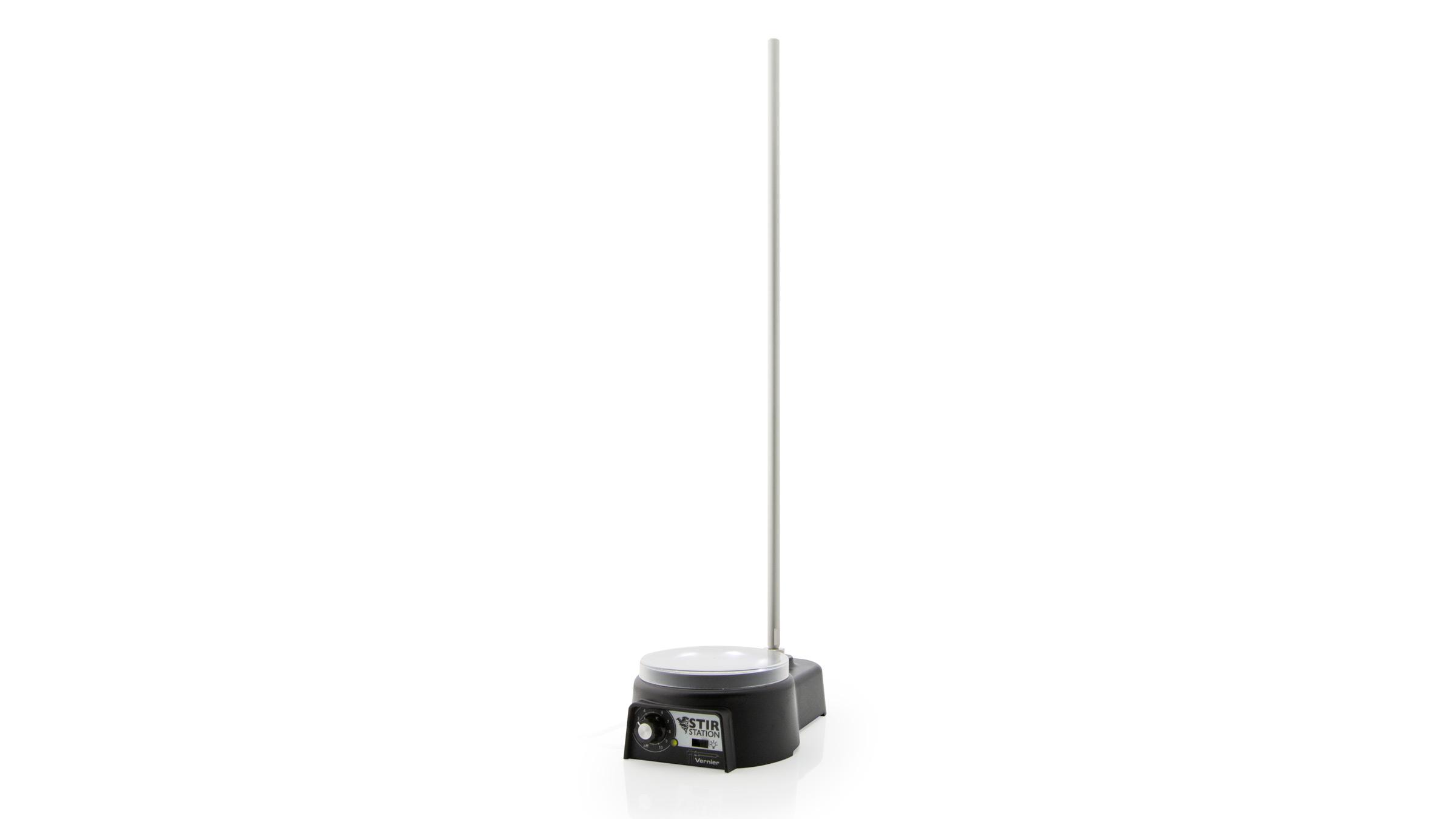
Introduction
Some acids form in the atmosphere and surface water when gasses of nonmetal oxides react with water. These nonmetals oxides can include carbon dioxide, nitrogen dioxide, and sulfur dioxide. All of these chemicals can appear in the atmosphere resulting from natural and artificial sources.
Most acids dissociate in water according to the following equation:
HA (aq) + H2O (ℓ) → H3O+ (aq) + A– (aq)
HA is the acid, H3O+ is called the hydronium ion which is formed when the hydrogen ion from the acid reacts with water, and A– is the anion from the acid.
pH is a scale used to simplify the description of acids and bases of very low concentration. The equation to calculate pH is the following:
pH = –log[H3O+]
[H3O+] is the concentration of hydronium in moles per liter (mol/L) or molarity.
Acids and bases at these low concentrations have pH values that fall in the range of 0–14.
To calculate the concentration of these acids or bases in units of mol/L or M, the equation rearranges as follows:
[H3O+] = 10–pH
In this experiment, you will observe the formation of acids from the reaction of gasses of nonmetal oxides with water.
You will measure the pH change of the solutions and determine the concentration of each acid after it has formed.
Finally, you will render an opinion as to which of the three gasses, carbon dioxide, sulfur dioxide, or nitrogen dioxide, may have caused the fish kill in Mirror Lake. Be ready to support your opinion.
Objectives
- Generate CO2, SO2, and NO2 gasses.
- Simulate the formation of acid rain by bubbling each of the nonmetal oxide gasses into water.
- Measure the pH of the acidic solutions to compare their relative strengths.
- Calculate the concentration of the acid solutions from the pH.
- Render your professional opinion about which gas polluted Mirror Lake.
Sensors and Equipment
This experiment features the following sensors and equipment. Additional equipment may be required.
Ready to Experiment?
Ask an Expert
Get answers to your questions about how to teach this experiment with our support team.
- Call toll-free: 888-837-6437
- Chat with Us
- Email support@vernier.com
Purchase the Lab Book
This experiment is #4 of Forensic Chemistry Experiments. The experiment in the book includes student instructions as well as instructor information for set up, helpful hints, and sample graphs and data.




